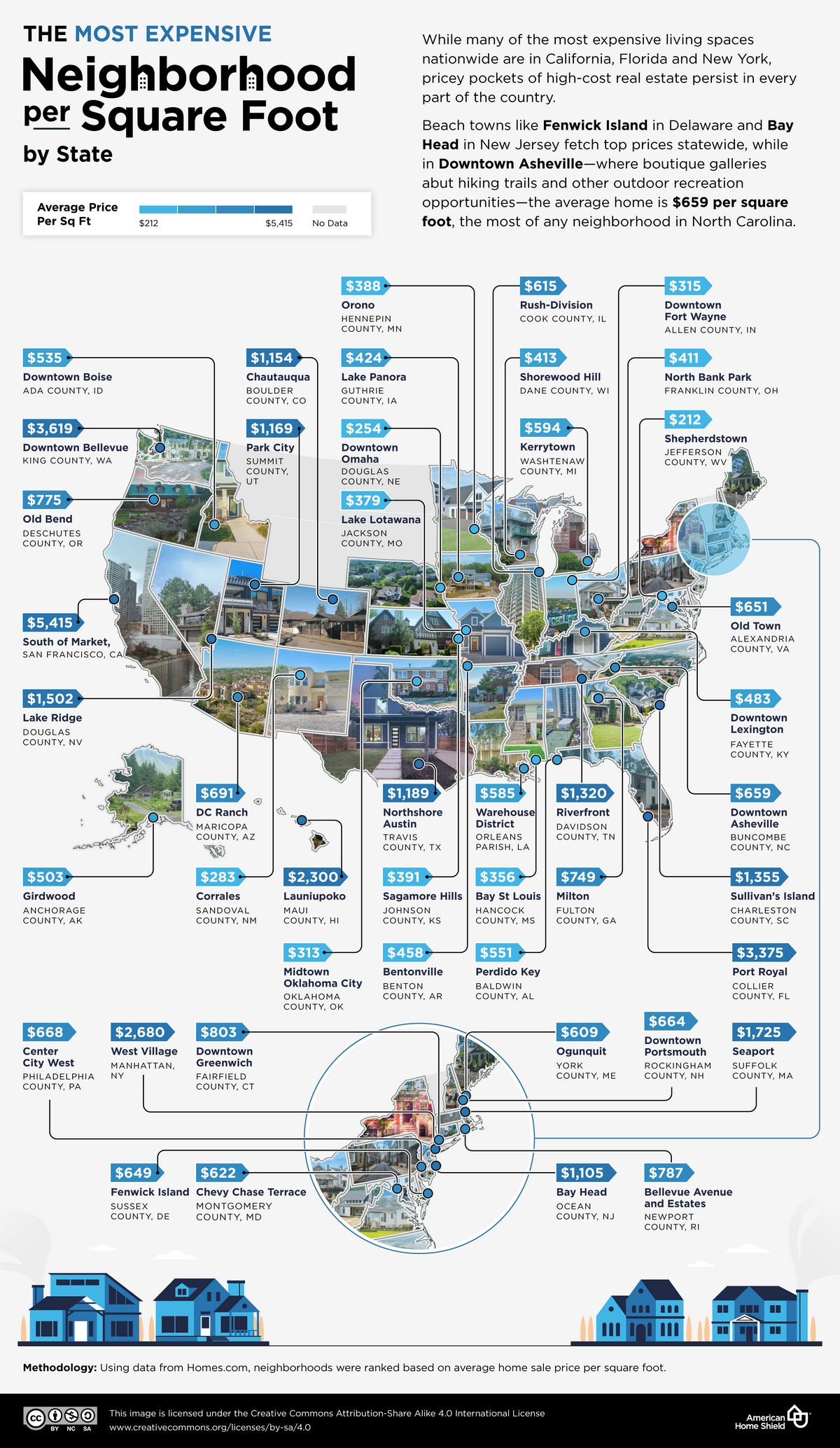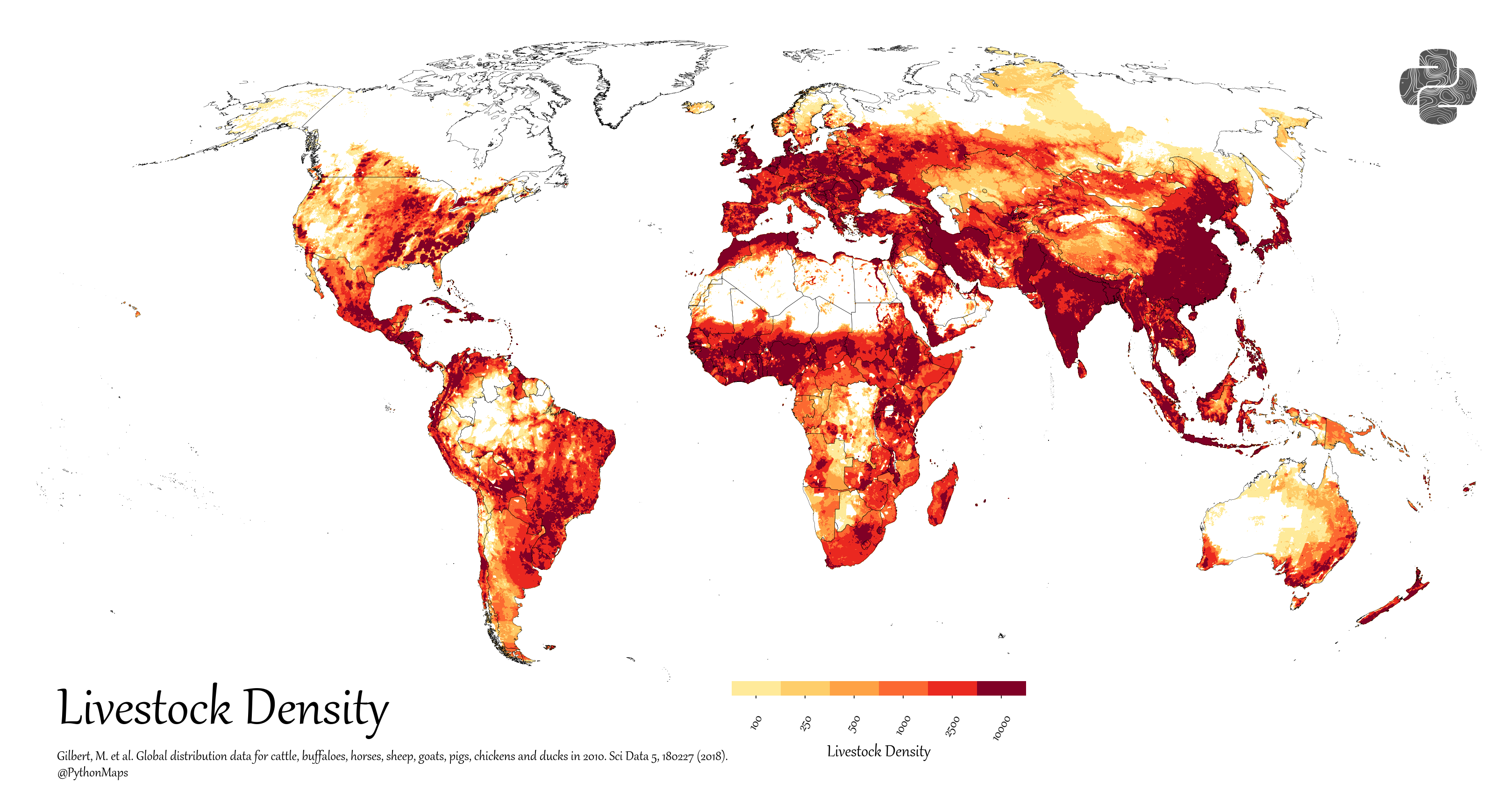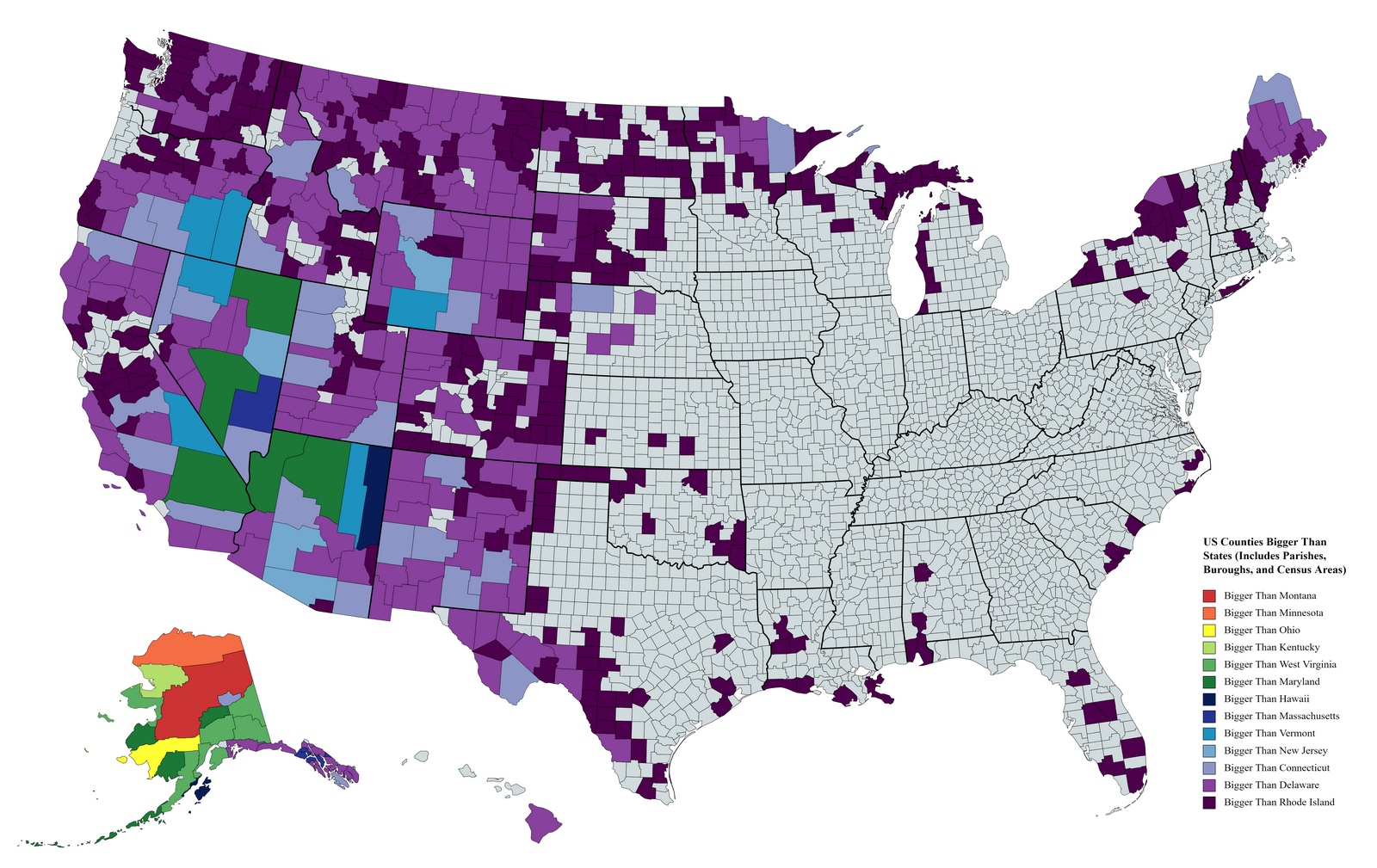Horses Across America: A Visual Journey Using USDA Census Data
In 2022, the USDA conducted its Agriculture Census, providing fascinating insights into equine distribution across the United States. Utilizing this rich dataset, @hdk_maps created three compelling maps showcasing the number of horses per capita, the total number of horses by county, and the density per square mile. These maps shed light on America’s equestrian landscape and reveal some unexpected highlights, such as the dominance of Kentucky in horse density, the surprising equine prevalence in sparsely populated counties like King County, TX, and the significant presence of horses in regions like Marion County, FL, known as the “Horse Capital of the World.” Let’s take a closer look at these maps and the stories they convey.
Horses Per Capita
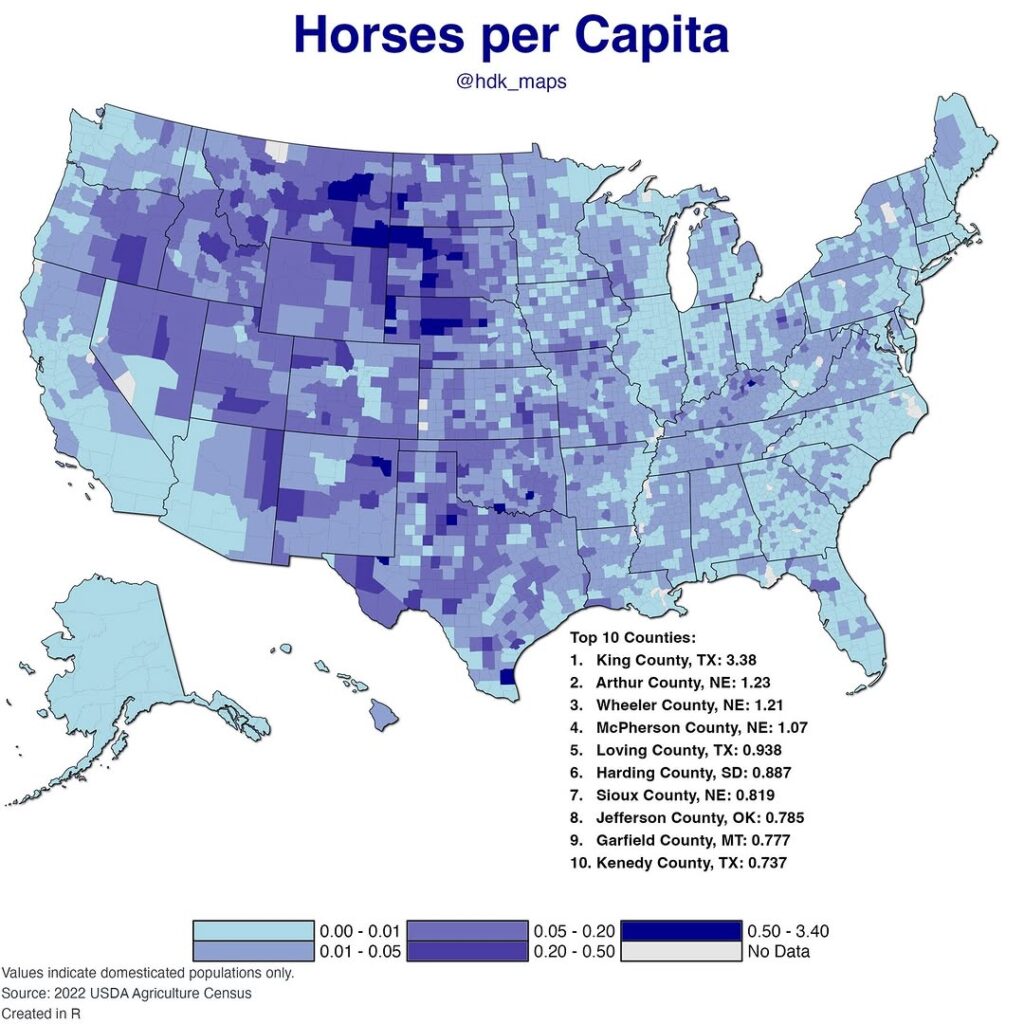
The first map shows where horses are most prevalent per person. Topping the list is King County, TX, with a remarkable 3.38 horses per person, stands out due to its unique combination of a low population and a high reliance on horses for ranching and agricultural activities. This sparsely populated county relies heavily on equine companions for daily work and transportation, which contributes to its unusually high horse-per-person ratio. Other notable counties include Arthur County, NE (1.23), Wheeler County, NE (1.21), and McPherson County, NE (1.07). These regions are characterized by low human populations and a strong agricultural presence, making horses a vital part of local life.
Total Number of Horses by County
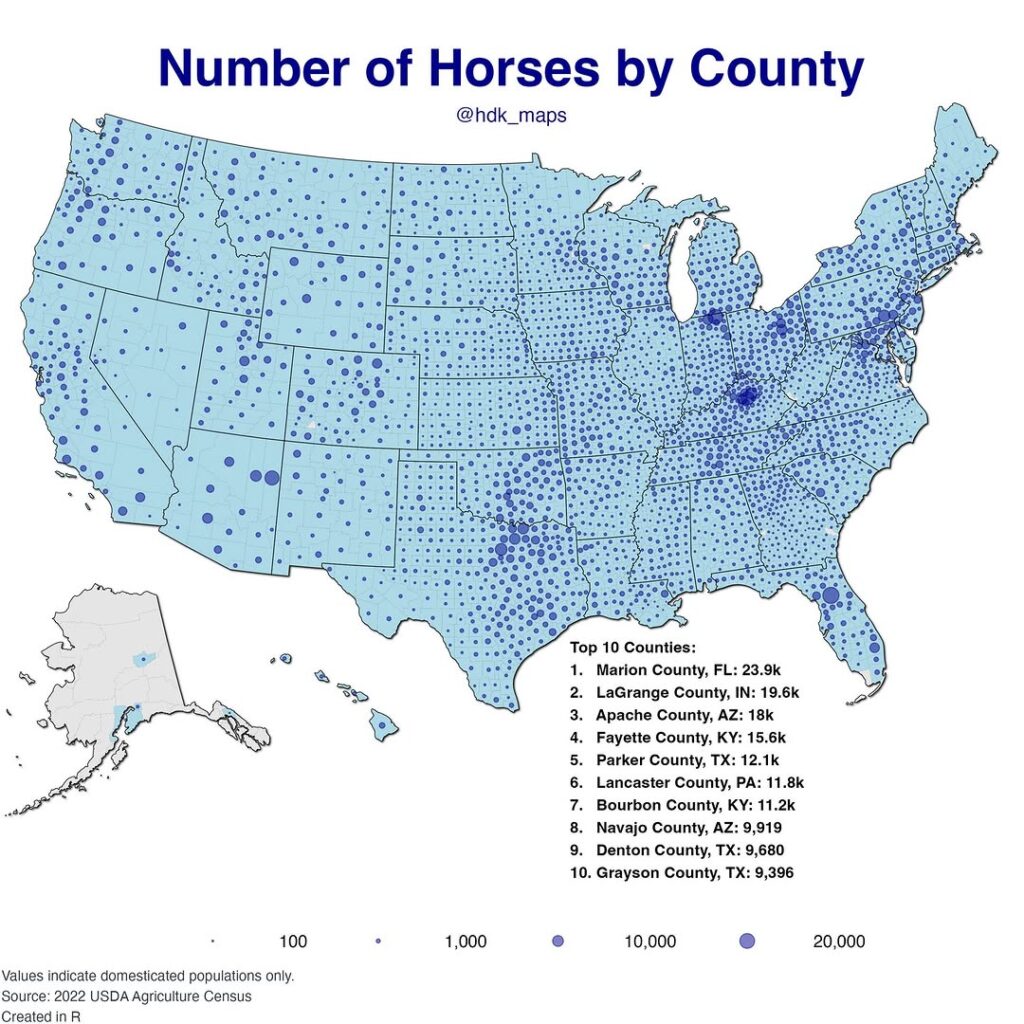
This map focuses on sheer numbers. Marion County, FL, known as the “Horse Capital of the World,” leads with 23,900 horses, thanks to its world-renowned thoroughbred breeding farms, training facilities, and equestrian events like the Ocala Horse Show. LaGrange County, IN (19,600) and Apache County, AZ (18,000) follow closely. Kentucky stands out as an equine hub, with Fayette County (15,600) and Bourbon County (11,200) among the top 10 counties. This aligns with Kentucky’s reputation for thoroughbred breeding and racing.
Horses Per Square Mile
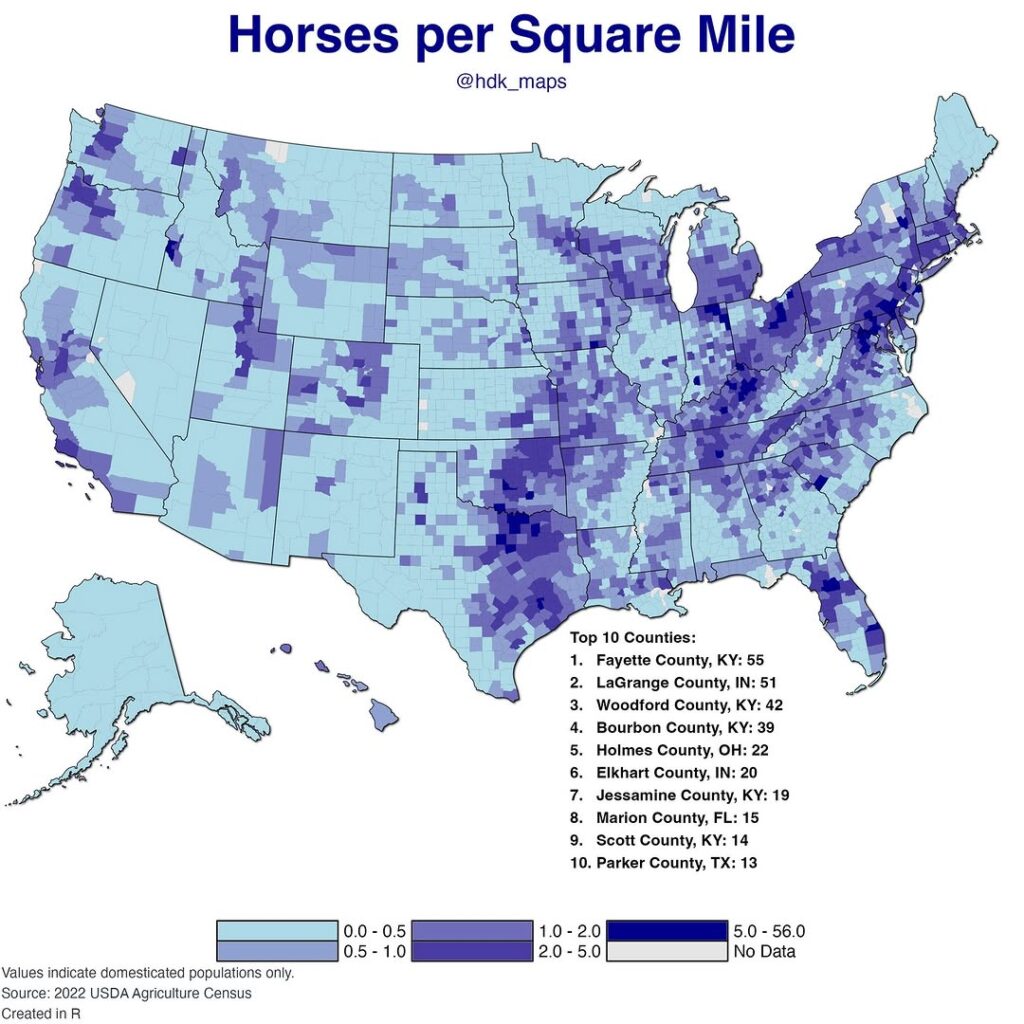
Density provides another fascinating perspective. Fayette County, KY, possesses an incredible 55 horses per square mile, with LaGrange County, IN, following at 51. Counties in Kentucky dominate this category, reflecting its historical and cultural ties to horses. Marion County, FL, also makes an appearance with 15 horses per square mile, underscoring its equestrian prominence.
The Broader Perspective
According to the USDA, the total number of horses in the United States is approximately 7.2 million (USDA Census, 2022). Texas leads with over 700,000 horses, followed by California and Florida. Horses are primarily used for recreation, breeding, racing, and work. Recreational riding is the most common use, reflecting the enduring appeal of equestrian activities in American culture.
Trends in Equine Populations
Horse numbers have fluctuated over time. The mid-20th century saw a decline due to mechanization, but recent decades have seen a resurgence. For example, recreational riding has become increasingly popular, with statistics showing steady growth in horseback riding clubs and trail-riding activities. Competitive equestrian sports, including show jumping and dressage, have also seen a rise in participation, fueled by high-profile events like the Olympics and national championships. However, some rural areas continue to face challenges in maintaining horse populations because of economic pressures.
Final Thoughts
These maps not only highlight the distribution of horses but also underscore their significance in various regions of the United States. Have you noticed similar trends in your own area or had any personal experiences with horses? Share your thoughts in the comments! Whether you’re an equestrian enthusiast or a data geek, they offer a unique glimpse into America’s agricultural and cultural fabric. If you enjoyed this exploration, feel free to share your thoughts below!



